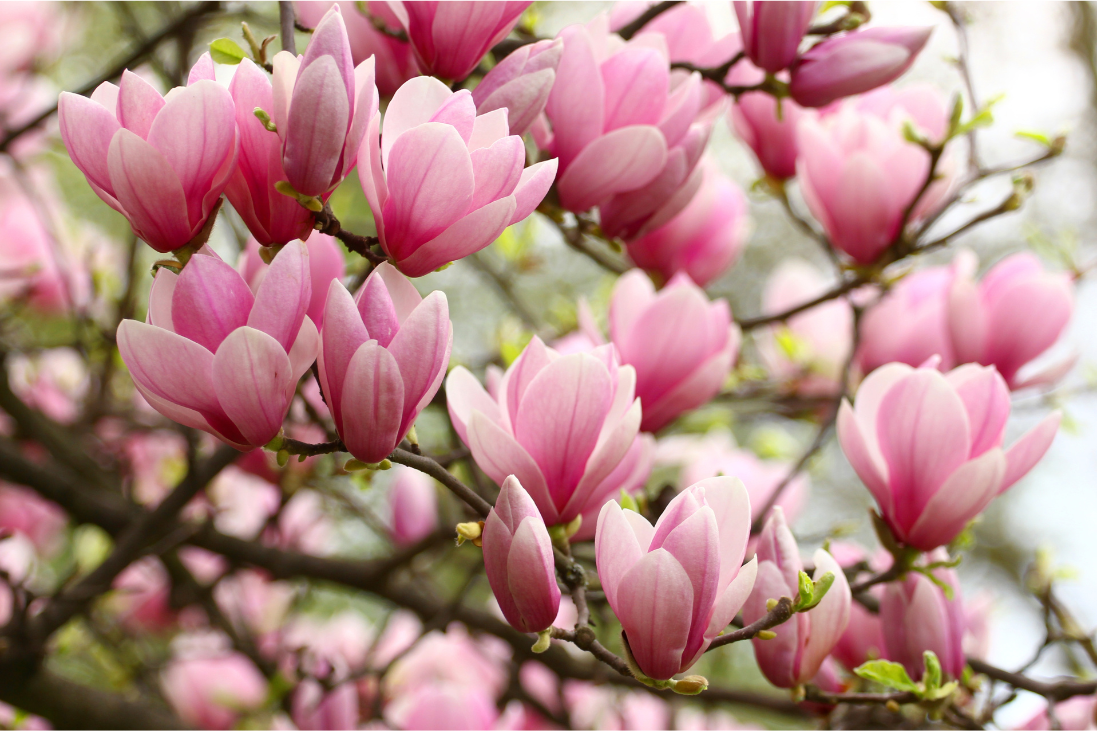A Complete Guide to Caring for Your Magnolia Tree

Magnolia trees are stunning, with their bold, fragrant blooms that can make any garden stand out. Whether you’ve got a sprawling yard or a more modest space, there’s likely a magnolia variety that’s just right for you. However, like any plant, they have their own set of needs, and understanding these is key to keeping your magnolia tree healthy and thriving.
Choosing the Right Spot
Magnolias thrive in full sun, although they can tolerate partial shade. The more sunlight your tree gets, the better it will bloom, which is one of the main reasons people plant magnolias in the first place. However, if you live in an area with particularly hot summers, a spot that offers some afternoon shade can help protect the tree from extreme heat.
Soil quality is another critical factor. Magnolias prefer well-drained soil that is rich in organic matter. If your soil is heavy with clay, like in many regions, you’ll need to do some preparation before planting. Adding compost or well-rotted manure can significantly improve soil structure and drainage, which is essential for magnolias to avoid root rot.
If you’re planting a deciduous variety, remember that these trees prefer a bit more shelter from harsh winds. Evergreen magnolias, on the other hand, are hardier and can handle a bit more exposure. Regardless of the type, make sure you give your magnolia enough room to grow. These trees can spread wide, and planting them too close to structures or other trees can lead to problems down the line.
Watering and Feeding Your Magnolia Tree
Magnolias are relatively low-maintenance once established, but they do require regular watering, especially in the first few years as they develop their root systems. Newly planted magnolias should be watered deeply at least once a week, more often if you’re in a particularly dry or hot area. Established trees are more drought-tolerant but still benefit from consistent watering during dry spells.
When it comes to feeding, magnolias are not particularly fussy, but they do appreciate a good meal, especially in the growing season. A general-purpose fertilizer applied in the spring can give your magnolia a boost as it starts to produce new growth. For an organic option, well-composted manure or a slow-release fertilizer works well. Be cautious not to over-fertilize, as this can lead to lush foliage at the expense of flowers.
Mulching around the base of your magnolia tree is highly beneficial. A layer of mulch helps retain soil moisture, suppress weeds, and gradually adds organic matter to the soil as it breaks down. Just be sure not to pile the mulch directly against the trunk, as this can lead to rot.
Pruning and Shaping Your Magnolia Tree
Pruning is an important part of magnolia tree care, but it’s something that should be done with care. Magnolias don’t need a lot of pruning, and overdoing it can harm the tree. The best time to prune a magnolia is right after it finishes flowering, which typically happens in late spring or early summer. This timing allows the tree to heal quickly and minimizes the risk of cutting off next year’s flower buds.
Related: Easiest Tree Pruning Method and Common Mistakes to Avoid
When you do prune, focus on removing any dead or damaged branches first. If your magnolia is young, you might also want to shape it by cutting back any wayward branches that could affect its overall form. For evergreen varieties, light pruning can help maintain their shape, but be cautious not to overdo it, as heavy pruning can lead to a sparse appearance.
If you have a deciduous magnolia, keep in mind that these trees often have a naturally open and somewhat irregular shape. This is part of their charm, so resist the urge to prune them into a more conventional form. Letting them develop their natural shape will result in a more beautiful tree in the long run.
Common Issues and How to Handle Them
Magnolia trees are generally hardy and resistant to many pests and diseases, but they’re not completely immune. One common issue is magnolia scale, a pest that can weaken the tree and cause sooty mold to develop on the leaves and branches. If you notice a sticky substance on the leaves or black mold, it’s likely scale is the culprit. Treating scale involves pruning out infested branches and applying horticultural oil in the dormant season to smother the insects.
Another issue to watch for is leaf spot, a fungal disease that can cause unsightly spots on the leaves. This is more common in humid climates or during particularly wet seasons. While leaf spot is rarely fatal, it can weaken the tree over time. Keeping the area around your tree clean, avoiding overhead watering, and ensuring good air circulation can help prevent this problem.
Root rot is another potential concern, particularly in areas with poor drainage. Symptoms include yellowing leaves, poor growth, and wilting. The best defense against root rot is proper planting—ensuring your magnolia is in well-drained soil and not overwatered. If you suspect root rot, improving soil drainage and reducing watering can help, but severely affected trees may not recover.
Lastly, magnolias are sometimes plagued by nutrient deficiencies, which can cause the leaves to turn yellow. This is often due to a lack of iron or other essential nutrients. A soil test can help identify any deficiencies, and applying a fertilizer that addresses the specific need can often correct the problem.